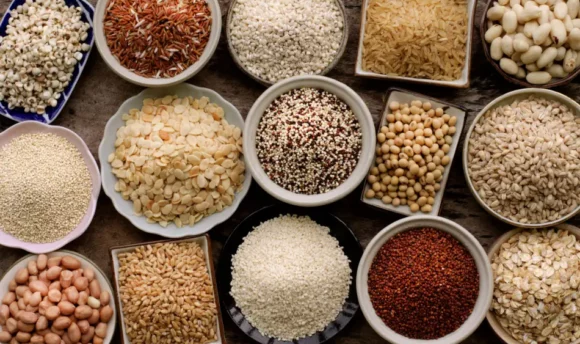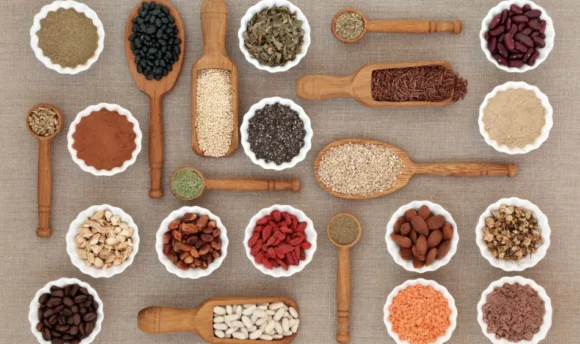Is Swai Fish Healthy: Nutrition, Calories and Ingredients
Nutritional information and curious facts about one of the most controversial fishes in the world.

Swai fish, also known as Asian catfish, basa fish, and iridescent shark, is a very popular catch in South Asia due to the large number of species that inhabit the Mekong River.
Although it is beneficial for aquaculture because of its easy and economical harvesting, consuming swai fish is under debate due to heavy metal contamination of the river in which it lives and breeds.
In addition, this fish is blamed for destroying the mangroves in its habitat and is sometimes singled out as a parasitic species.
In this article, we will investigate all the facts behind this controversial fish to determine if it is healthy and convenient. Join us on this interesting journey.
What Is a Swai Fish?
The swai fish is a freshwater fish whose reservoir is mostly found in the Asian continent in the region of Vietnam. In addition to its natural reservoir, it is also a factory-farmed fish that is reared in a controlled environment on a large scale.
It is highly appreciated because it reproduces very easily, which makes it possible to harvest large quantities of this species for marketing at a low cost, making it the protagonist of many dishes in Southeast Asia.
This Vietnamese catfish can also be commonly found throughout the United States due to the great demand for its importation and low cost, even being marketed under other fish names, making it part of frequent frauds.
Most of the exported swai fish comes from fish farms specially built for this species, but we cannot be sure that they are bred in the best conditions because when breeding massive fish populations, the food they receive can be very deficient.
What Kind of Fish Is Swai?
The swai fish is a white-fleshed fish belonging to the order Siluriformes of the catfish shark family, but it is not a shark. The swai or Pangasius hypophthalmus can reach 10 to 15 pounds and is prized for its juicy and tender meat and its low cost in the market.
Swai fish is found in countries such as Vietnam, Malaysia, and Indonesia and is exported worldwide mainly to countries such as Russia, China, and the United States.
It is a rustic fish that lives in low-quality waters and with a high population density of its own species, feeding voraciously on waste in its natural environment.
Is Swai Fish Healthy?
The swai fish is not considered a healthy freshwater fish, not only because of its poor nutrient content but also because of the conditions in which it grows and breeds.
In the wild, a large part of the swai fish population lives in the Mekong River, Vietnam. These waters are believed to be highly contaminated by heavy metals from mining and may contain many pathogenic microorganisms such as amoebae, Escherichia Coli, and Salmonella due to lack of sanitation.
In addition to the conditions in which it lives, swai fish feed on the dangerous waste that falls into the river waters.
Perhaps you have been exposed to eating swai fish without even knowing it since it tends to be marketed under different names to prevent consumers from rejecting it.
When raised in a more controlled environment for breeding and commercialization, these factory-farmed fish are fed compound food that is usually high in flour, soy, and genetically modified oils.
Also, these fish farms often use antibiotics which can lead to health problems for humans who regularly consume these species.
What Are the Benefits of Swai Fish?
It is a cheap white-fleshed fish – thanks to its ease of reproduction and recollection, it is not an expensive fish option in the markets compared to other fish in the same white-fleshed category.
The farms that are dedicated to the breeding of swai fish specialize only in this species of striped catfish, achieving a high reproduction rate to be exported to more than 100 countries around the world.
Swai fish is low in fat and calories – A 100 g fillet of swai fish contains only 62 calories and 1.34 g of healthy fats, making it ideal for weight loss diets and improving overall health.
However, these benefits lose importance due to the questionable quality of this species, and while it could prevent obesity, on the other hand, it could cause other types of diseases.
Its light flavor allows it to be used in many types of recipes – it does not have a very strong flavor, and its meat can be used in different recipes for salads, soups, and creams, among others.
What Are the Side Effects of Swai Fish?
As with other types of fish, swai fish can cause allergic reactions in sensitive individuals, presenting symptoms such as vomiting, stomach cramps, and/or skin rash.
It may cause toxic effects in a developing fetus if consumed by a pregnant woman, as it is a fish that may contain high amounts of mercury due to contamination of the waters where it is raised.
Swai fish may cause antibiotic resistance in its avid consumers because this fish is treated with different drugs and chemicals on the fish farms.
What Ingredients Does Swai Fish Contain?
Swai fish has a mild flavor, and that is why it can be used in different recipes. One of the most known and consumed is Lemon Butter Swai Fish, and these are its ingredients:
- Swai fish filets
- Fresh lemon juice
- Butter
- Salt and pepper
- Parsley for garnish
- 1 tablespoon vegetable oil
- Some recipes use white wine for the lemon butter sauce
This traditional recipe uses many fats, such as oil and butter, which significantly increases the dish’s calories. When prepared, the fish is fried in the oil and then bathed with two tablespoons of melted butter.
If you follow a keto diet, in which fat is allowed in high amounts, you need to ensure that they come from healthy sources such as extra virgin olive oil, avocado, or nuts, as well as good quality fatty fish.
Nutrition Facts
Fish is a very important addition to a balanced diet due to its healthy fats and protein supply. The following table shows the nutritional value of swai fish, scientifically known as Pangasianodon (Pangasius) hypothalamus.
Nutrition table (per 100 g)
| Calories/Nutrient | Amount |
| Calories (Kcal) | 62 |
| Net Carbs (g) | 0 |
| Fats (Total) | 1.34 |
| Protein (g) | 13.4 |
| Cholesterol (mg) | 45 |
Source: https://fdc.nal.usda.gov/fdc-app.html#/food-details/2194490/nutrients
Low in vitamins and minerals
When a fish grows in a precarious environment with a high degree of contamination, it does not reach optimal levels of nutrients in its organism. This is the case with swai fish. Although it contains calcium, sodium, and potassium, it is not an important source of these nutrients.
High in protein
Swai fish or iridescent sharks can be said to have a decent amount of protein at 13.4 grams. However, it lags behind fish such as tilapia, which has 20.1 g of protein, and Atlantic mackerel, which contains 18.6 g of protein.
Low in fats and calories
White-fleshed fish are characterized by being low in fat, and this is the case of swai, which contains only 1.34 g. This makes it low in calories and suitable for a diet in patients at cardiovascular risk as it improves their lipid profile.
FAQs
It comes from Southeast Asia and is mostly raised in the Mekong River in Vietnam. A smaller proportion can also be found in the Chao Phraya River in Thailand.
Yes, it is safe, and you can eat swai fish if you take into account the conditions under which it was raised and fed before it is sold frozen to markets around the world.
Yes, there are fish farms specialized in the breeding and care of swai fish exclusively, from which most of the exportations come.
Swai fish is similar to other light white-fleshed fish such as sole and flounder. In addition, when sliced for packaging and sale, it can look very similar to tilapia, which is a healthy fish significantly more expensive, often lending itself to fraud.
A Word From Nutritionist
One of the most important components for which fish are so appreciated is omega-3 fatty acids. For this reason, the American Heart Association (AHA) recommends eating it at least twice a week.
Omega-3 fatty acids protect the heart by preventing arrhythmias and hypertension and helping lower triglycerides. This component is found in greater quantities in fatty fish such as salmon, trout, and sardines.
Swai fish or striped catfish does not contain a relevant amount of these fatty acids, and its vitamin and mineral profile makes it nutritionally poor.
It can be included as part of a balanced diet but should always be supplemented with foods such as nuts and seeds as these are rich in another type of omega-3 fatty acid known as ALA or alpha-linolenic acid.
It is not recommended to eat swai fish, especially if it is a wild fish, in young children or pregnant women due to the risk of being exposed to large amounts of mercury as it is a metal that is harmful to health.
Conclusion
The worldwide rejection of this white-fleshed fish species is due to the knowledge of the precarious conditions in which it lives, both in the Mekong River in Vietnam, which is its main reservoir and in the different fish farms that are dedicated to its exclusive reproduction.
The Mekong River does not have an adequate sanitation service, which is why heavy metals accumulate in its waters as a result of mining in nearby areas, and also a great variety of disease-causing microorganisms can be found.
Also, swai fish feed on all the waste that falls into the river waters, which is the main reason their bodies lack nutrients. However, it is safe to eat as long as you know where it comes from and follow a balanced diet that ensures you get the nutrients you don’t find in swai fish.
In addition to farm-raised swai fish, you can include in your diet other fish options such as tilapia or mackerel, which have a more complete nutritional content.

















































 Select your language:
Select your language: 








